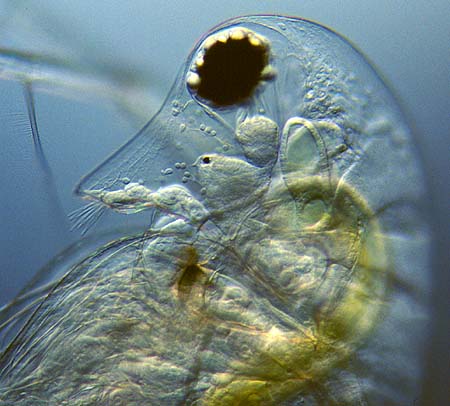
A distinctive feature in water fleas is the compound eye. With higher magnification a second simple eye can be seen as a small black spot. The big compound eye consists of two halves that are fused together. Under the eye the brain is visible.
The tiny dots left of the brain are blood-cells (corpuscles).
Projecting from the 'snout' (rostrum) are the first antennae with sensory hairs. A digestive gland is connected to the yellow-green gut.
Five pairs of leaf-like legs create a current in the water that enables them to breath as well as filter food. A pair of pointed appendages pass the food towards two strong mandibles (visible as a brown area).